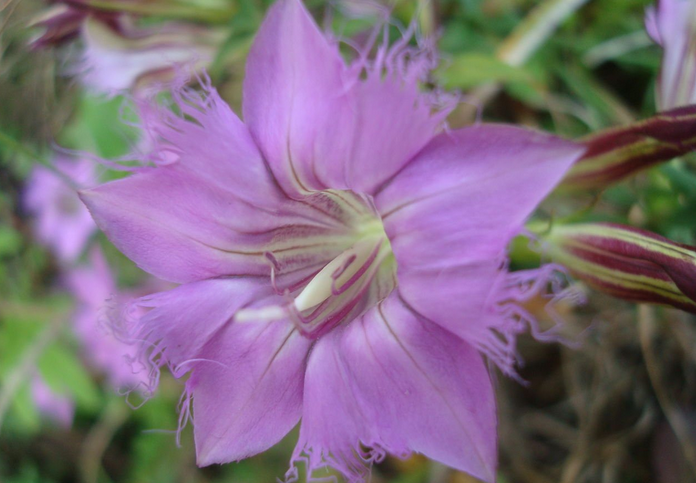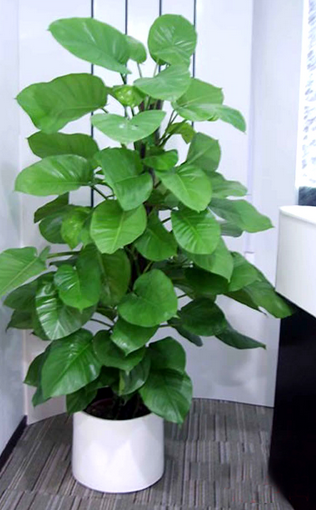What are the methods of planting Gentiana?
Gentian is a plant of the genus Gentiana of Gentianaceae. It has the effect of clearing heat, dryness and dampness, purging the liver and gallbladder. It mainly treats hypertension, dizziness and tinnitus, cholecystitis, acute infectious hepatitis, wet itching of vagina, damp-heat jaundice, boils and carbuncle, bitter mouth and wind, etc., which is a good medicine for protecting liver and gallbladder. Now many people plant gentian, so what are the planting methods of gentian? Next, let the editor who decorates the network give you a brief introduction.

What are the methods of planting Gentiana?
1. Mode of reproduction
Gentian can reproduce sexually or asexually. Sexual reproduction requires relatively strict technical conditions. After seed sowing, the soil water content is not less than 30%, the surface air humidity is 60-70%, and the temperature is 25-28 ℃. It begins to germinate in about 7 days, and the seed germination rate is higher when soil PH6.3-7.8. Asexual propagation can be propagated by root division and aboveground stem cutting. Split root propagation dug out the underground part in autumn, cut the rhizome into 3 pieces, together with the whisker root to prepare for planting; aboveground stem cutting can take the branches before the bud differentiation of perennial plants, every 3 sections are cutting materials, the lower end node is obliquely cut, and the two leaves of the end node are removed, and immediately soak in the compound hormone solution GA, BAP, NAA 1ppm equal volume mixture 2-3 cm, after 48 hours, prepare for cutting material. Light can promote seed germination.
2. Planting method
Planting method of gentian: sowing seeds in spring, washing the seeds before sowing, mixing with appropriate amount of fine sand, sowing on the flat border bed, sowing 1-1.2g per square meter, covering grass after sowing to maintain temperature and humidity, the temperature should not exceed 30 ℃. After growing for 2 years, transplanting was carried out in spring or autumn, and trenches were opened on the prepared ridges, which depended on the size of the plants. The distance between plants was about 15 cm, and the depth of soil cover was 3-4 cm.
Split-root propagation: the breeding material will be planted on the done ridge in autumn, the distance between the plants is about 10 cm, and the depth of covering soil is about 5 cm. After planting, enough water is irrigated to preserve soil moisture.
Cutting propagation: put the spare cutting material into the whole border bed, the row spacing is 10 × 10 cm, the cutting depth is 2-3 cm, then irrigate, soil temperature 18-20 ℃, about 3 weeks can take root.
How to grow gentian? Sowing methods and planting techniques of Gentiana
Gentian, also known as gentian, gentian, bitter gentian and so on, is a perennial herb of the gentian family. Gentian is a common traditional Chinese medicine in China, and it is also used in medicine. It has the effects of clearing heat and dryness, purging liver and calming shock, promoting gallbladder and protecting liver, and is very popular in the market. So, how to grow gentian? The sowing methods and planting techniques of gentian are introduced as follows.
Picture: gentian planting
First, the sowing method of gentian
1. Autumn sowing: gentian grass is usually sown in November and sprouts in the following spring. In order to make the sowing uniform, appropriate amount of fine sand or humus can be mixed into the seeds.
two。 Spring sowing: the spring sowing of Gentiana should be treated with sand storage first, that is, the seeds should be mixed with fine sand at 1:3 and buried outdoors. After the influence of low temperature in winter, the seeds should be sowed with strips.
Picture: gentian planting
2. Planting techniques of gentian.
1. Land selection and land preparation: gentian should choose sandy soil which is moist, flat, sunny and rich in humus, but not suitable for cultivation in areas with high dryness and direct sunlight, over-sticky soil and barren soil.
two。 Weeding in time: weeding should not be restricted by the number of times when gentian is planted. In line with the principle of early weeding and weeding as soon as you see the grass, do not wait for weeds to grow up to form a barren grass before pulling up, which is both labor-consuming and seedling-damaging.
3. Reasonable loosening: after transplanting slow seedlings, gentian should be removed by hand or rake in time after watering. Do not loosen the soil too deeply, so as not to hurt the seedlings or bring them out, generally combined with weeding and loosening the soil for 2-3 times.
4. Timely topdressing: foliar topdressing was carried out after transplanting slow seedlings, and foliar topdressing could be carried out twice from leaf expansion to budding and from flowering to fruiting, using foliar fertilizers such as potassium dihydrogen phosphate, Yemanbao, high yield and so on.
5. Thinning flowers and picking buds: in order to reduce the consumption of nutrients, promote the accumulation of root matter, accelerate the growth of rhizomes and improve the cultivation efficiency, the buds should be removed completely after budding in non-harvested fields.
[editor's conclusion] Gentiana belongs to alpine plants and likes humid and cool climate, so it needs special attention in the process of planting. The above introduces the sowing methods and planting techniques of gentian, hoping to be helpful to you!
The planting method of Gentiana
Choice of soil:
Choose sandy soil that is relatively wet and rich in organic matter.
Choice of environment:
Gentian likes plenty of sunshine, so you can choose a place where the sun can shine directly.
Prepare before planting:
The basic fertilizer should be adequate, and then flatten the surface of the soil to make ridges and furrows to plant gentian.
Post-planting maintenance:
After the seeds send out the seedlings, the unhealthy and rising seedlings can be pulled out and the sturdier seedlings can be cultivated.
Weeding should be often carried out during the seedling period, which can be pulled out directly, so as not to let the weeds absorb the nutrients of the soil, resulting in the lack of nutrients in the seedlings, let alone wait for the grass to grow up, so it is easy to hurt the roots of Gentiana.
If there are turtles or caking in the soil, the soil should be loosened in time. Loose soil should be careful, not too deep, otherwise it is easy to hurt the seedlings, at the same time will also take the seedlings out of the soil. Transplanting and planting can also be carried out when loosening the soil. Loosen the soil for 2 to 3 times after transplanting.
After transplanting, a topdressing should be carried out, and the leaf surface can be sprayed and fertilized by spraying. A topdressing is carried out during budding and blooming and fruiting. In 3 to 4 years, the soil can be fertilized once, and the soil should be paved after fertilization.
Flower thinning and bud picking
For fruiting plants, if the number of flowers is much larger than the number of fruits, the flowers should be picked and cut in time so as not to consume unnecessary nutrients. If it is not picked and cut in time, the final fruit will fall before it is fully formed. Remove it.
- Prev

What do you need to pay attention to when planting Asarum?
What do you need to pay attention to when planting Asarum?
- Next

Green pineapple leaves turn yellow? How to solve?
Nowadays, many people choose to cultivate green pineapple, not only because it is a personal hobby, but also because it can beautify the home and purify the environment, but many owners will have the phenomenon of yellowing leaves in the process of breeding green pineapple. So what is the reason for the yellowing of green apple leaves? What are the solutions?
Related
- Fuxing push coffee new agricultural production and marketing class: lack of small-scale processing plants
- Jujube rice field leisure farm deep ploughing Yilan for five years to create a space for organic food and play
- Nongyu Farm-A trial of organic papaya for brave women with advanced technology
- Four points for attention in the prevention and control of diseases and insect pests of edible fungi
- How to add nutrient solution to Edible Fungi
- Is there any good way to control edible fungus mites?
- Open Inoculation Technology of Edible Fungi
- Is there any clever way to use fertilizer for edible fungus in winter?
- What agents are used to kill the pathogens of edible fungi in the mushroom shed?
- Rapid drying of Edible Fungi

